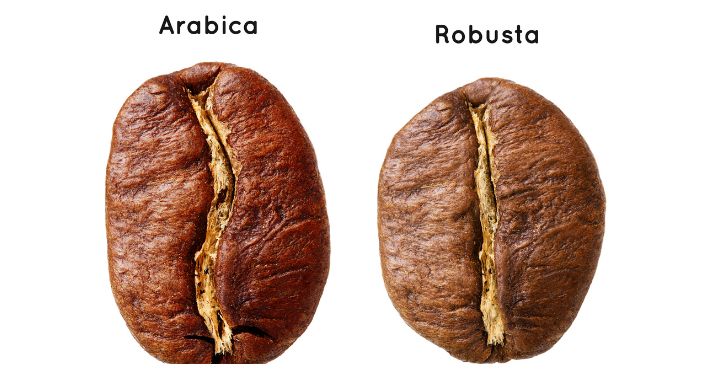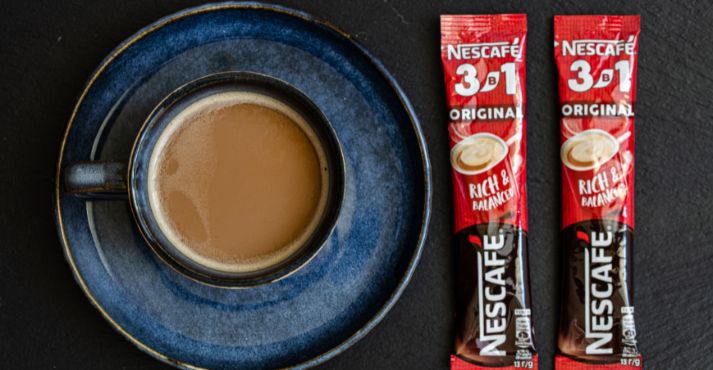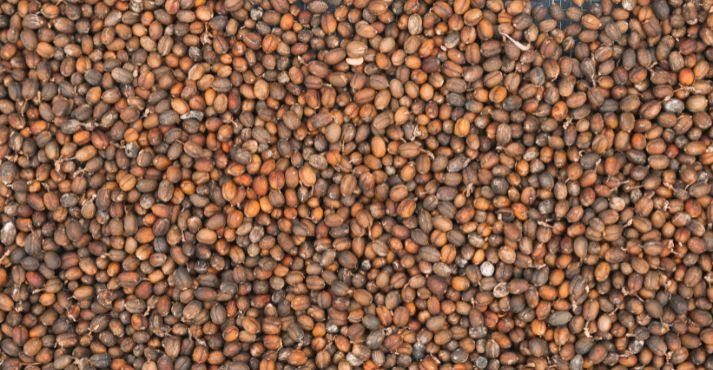Coffee is one of the most popular beverages worldwide, enjoyed by millions daily. While many people are familiar with Arabica coffee, another type makes up about 42.5% of the global coffee market: robusta coffee.
This type of coffee is known for its robust and bold flavor and higher caffeine content. Robusta coffee beans offer a more intense taste experience than the smoother and milder Arabica beans.
Grown mainly in regions like Vietnam, Brazil, and Africa, Robusta beans are valued for their resilience and ability to thrive in harsh conditions.
The popularity of Robusta coffee is surging due to its bold flavor, resilience to pests, and climate adaptability. It contains more caffeine than Arabica; Robusta coffee beans are considered superior in taste. According to World Coffee Research, Robusta makes up more than 40% of coffee worldwide.
This article will explore everything you need to know about Robusta coffee, from its origin and taste to its benefits and market trends.
What is Robusta Coffee?

Robusta coffee, also known scientifically as Coffea canephora, is a species of coffee known for its intense flavor, higher caffeine content, and resistance to pests and diseases.
Robusta plants typically have a greater crop yield, contain higher levels of caffeine, lower levels of sugar, higher levels of soluble solids, and are less susceptible to damaging pests and diseases. Robusta beans are often used in espresso blends and instant coffee due to their bold taste and ability to hold the processing methods.
So, where are Robusta coffee beans cultivated? The top global producers of robusta are currently Vietnam, Brazil, Indonesia, Uganda, and India, which together produce over 90% of the world’s robusta.
Vietnam has positioned itself as one of the world’s leading coffee producers and exporters, second place behind Brazil. The country produced approximately 26.3 million 60-kilogram bags of Robusta coffee during the 2022/23 production period.
Brazil accounts for nearly half of the world’s coffee output, producing 16.8 million bags of coffee in 2023. Coffee is produced in 14 regions in Brazil, in the central coffee-growing cluster of states.
According to World Coffee Research, Uganda is known primarily for robusta production, with over 1.8 million households growing coffee, and coffee contributes nearly a third of the country’s export earnings.
Indonesia is another leading coffee producer, exporting most of its coffee beans. The country produced ten million 60kg bags of Robusta coffee in 2022 and 2023. Indonesia’s coffee market revenue is expected to reach US$4 billion by 2028.
India’s coffee legacy traces back to ancient times as far as the 16th century. Robusta production in India amounted to 4,420 thousand 60 kilogram bags in 2022/2023.
Approximately 90% of the Robusta coffee grown in these regions is produced for export to other countries such as Germany, Italy, and the United States for commercial coffee blends.
Characteristics of Robusta Coffee
Robusta coffee, scientifically known as Coffea canephora, is a coffee variety celebrated for its unique characteristics. Robusta stands apart in the coffee industry from its flavor to where it thrives.
Flavor Profile
Robusta coffee is renowned for its bold and robust flavor. It carries a deep, earthy taste, often accompanied by nutty or woody undertones. Robusta’s taste profile is more straightforward than its counterpart, Arabica, which boasts a broad range of flavors. It tends to be noticeably bitter, making it a popular choice for those who enjoy a stronger and more intense coffee experience.
Aroma
The aroma of Robusta coffee is distinctively different from Arabica. It tends to have a somewhat astringent aroma, which is less fragrant and floral than Arabica’s delicate scents. Robusta’s aroma is often described as earthy or woody, reflecting its hearty flavor.
Caffeine Content
One of the key characteristics that sets Robusta coffee apart is its high caffeine content. Robusta beans typically contain around 2.2-2.7% caffeine by weight, significantly more than Arabica’s 1.2-1.5%. This elevated caffeine level contributes to the coffee’s bitterness and boldness. It also makes Robusta beans more robust against pests and diseases, as caffeine acts as a natural pesticide.
Growing and Cultivating Robusta Coffee
Growing Robusta coffee requires specific conditions to thrive. The plant is known for its resilience, but it still needs the right environment to produce the best beans.
Climate and Soil Requirements
Robusta coffee plants prefer:
- Climate: Warm temperatures between 75 and 85 degrees Fahrenheit (24 and 30 degrees Celsius). The plant can tolerate higher temperatures, making it suitable for tropical regions.
- Altitude: Unlike Arabica coffee, which grows best at higher altitudes, Robusta coffee thrives at lower altitudes, typically between sea level and 2,000 feet (600 meters).
- Soil: Rich, well-drained soils with a pH level of 5.2-6.3. The soil should be fertile and have plenty of organic matter to support healthy plant growth.
These conditions allow Robusta beans to develop their unique flavor profile and high caffeine content.
Major Producing Countries
Several countries around the world are critical producers of Robusta coffee:
- Vietnam: Vietnam is the largest producer of Roosta coffee in the world. The country’s climate and terrain provide ideal conditions for cultivating Roosta beans. Vietnamese coffee culture is rich, and Roosta coffee plays a significant role.
- Brazil: As the second-largest producer, Brazil grows significant quantities of Robusta beans. The country’s diverse climates support both Arabica and Robusta coffee
- Indonesia: Indonesia ranks third in Robusta coffee The country’s tropical climate and volcanic soil create excellent conditions for growing Robusta coffee.
Other significant producers include Uganda, India, and parts of West Africa. These countries contribute to the global supply of Robusta coffee, each bringing unique flavors influenced by their specific growing conditions.
Arabica vs. Robusta: What’s the Difference?

Arabica and Robusta take the top places in the coffee industry worldwide and appeal to very different palates.
Arabica is a species of coffee (Coffea arabica) known for its mild flavor, aromatic qualities, and acidity. It’s the most popular type of coffee, known for its complex flavors and smoothness. Robusta is characterized by its strong, sometimes harsh flavor and higher caffeine content.
Arabica is often considered more popular and synonymous with excellent quality; however, Robusta coffee has unique characteristics that make it stand out.
1. Flavor Profile
Arabica high-quality beans taste slightly sweet with floral notes and fruity, berry aromas. They tend to have a higher acidity than Robusta beans, which gives them a winey tone. When swallowed, there will be a bitter taste called the aftertaste of coffee.
Robusta coffee has a more pungent taste with earthy or woody undertones and a bitter flavor. The intensity of these taste and aroma characteristics is primarily determined by the degree of roasting.
2. Caffeine Content
According to the research study, Arabica beans have around 1.2-1.5% caffeine content per bean. The lower caffeine content contributes to Arabica’s milder flavor profile and is often preferred by those sensitive to caffeine or who prefer a smoother coffee experience.
Robusta coffee generally contains higher caffeine levels, typically having about 2.2-2.7% caffeine content. The caffeine content of the Arabica bean is roughly half that of the Robusta bean. The higher caffeine concentration lends Robusta its characteristic bold flavor and more robust taste.
3. Growing Conditions
Arabica coffee plants prefer tropical climates close to the equator. They can be cultivated in higher altitudes with cooler temperatures and ample rainfall. It’s cultivated in regions with altitudes ranging from 600 to 2000 meters.
Robusta coffee, on the other hand, is grown at lower altitudes, typically between 200 to 800 meters, in warmer climates with consistent temperatures and less precipitation. Robusta tends to be a hardier, more disease-resistant bean than Arabica, which is less expensive to maintain and produces a higher yield.
4. Bean Appearance
Arabica beans are typically more giant and have a more elongated shape than Robusta beans, which are smaller and more rounded. They have a smoother surface with a noticeable crease, or cleft, running along one side of the bean. Arabica beans often exhibit a range of colors, from light green when unripe to dark red or brown when fully mature.
On the other hand, Robusta beans are smaller and more rounded and can appear more irregular with a rougher texture. Robusta beans have a rougher texture, with a thicker outer layer, sometimes giving them a more rugged appearance. They typically have a straighter crease or no crease compared to Arabica beans. Robusta beans also tend to have a darker coloration, ranging from light brown to almost black, depending on the degree of roasting.
5. Price and Market Demand
Arabica coffee generally has a higher price in the market due to its superior flavor profile and perceived quality. It’s in higher demand among specialty coffee enthusiasts and takes a significant share in the global coffee market. At the same time, Robusta coffee is priced lower and has a strong demand in the commercial sector.
This perception influences consumer preferences and willingness to pay premium prices for Arabica beans, especially in the specialty coffee segment. Crop failures or reduced yields due to adverse weather conditions may lead to price fluctuations and market demand.
Benefits and Uses of Robusta Coffee
With its unique characteristics, Robusta coffee offers a range of benefits and finds applications in various coffee products. Here, we delve into the advantages and uses of this robust coffee variety:
1. Bold Flavor and Richness
Robusta coffee is celebrated for its bold and robust flavor profile. Its distinctive taste, characterized by a deep, earthy undertone with nutty or woody notes, contributes to a more intense and bitter coffee experience. This boldness is preferred for those who relish a robust coffee flavor.
2. High Caffeine Content
Robusta beans contain significantly higher caffeine levels compared to Arabica. This elevated caffeine content contributes to its bitterness and boosts energy, making it a favored choice for those seeking a potent coffee kick.
3. Espresso Blends
Robusta’s strong and bitter character makes it an ideal candidate for espresso blends. When combined with Arabica beans, it adds body and a luscious crema to espresso shots. Espresso enthusiasts appreciate Robusta for the depth it brings to their favorite coffee beverages.
4. Instant Coffee

Nescafé instant coffee stick sachet
Robusta coffee is frequently used in instant coffee production. Its robust flavor and caffeine content ensure that instant coffee retains a bold and satisfying taste even after the freeze-drying or spray-drying process. This convenience appeals to many coffee drinkers who appreciate a quick and robust cup of coffee.
5. Coffee Blends
Robusta coffee plays a crucial role in various coffee blends. Its strong character can balance Arabica’s more delicate and nuanced flavors, creating a well-rounded blend. These blends cater to a diverse range of coffee preferences and can be found in both commercial and specialty coffee markets.
6. Cost-Effectiveness
Robusta coffee beans are often more affordable than Arabica. This cost-effectiveness makes it a valuable choice for businesses looking to maintain quality while managing their coffee-related expenses.
7. Pest and Disease Resistance
Robusta coffee plants have a higher natural resistance to pests and diseases thanks to their elevated caffeine content. This resilience reduces the need for chemical pesticides and contributes to more sustainable coffee farming practices.
Robusta Coffee Beans Processing Methods

Processing Robusta coffee beans is a crucial step in determining the flavor and quality of the final product. Two primary methods are used to process these beans: dry processing and wet processing. Each method significantly impacts the taste and overall quality of Robusta coffee.
Dry vs. Wet Processing
Dry processing is the traditional method for Robusta coffee. In this process, the coffee cherries are spread out in the sun to dry. This method is more straightforward and less expensive, making it popular in regions with limited access to water.
As the cherries dry, the outer fruit layer shrivels and hardens, which is removed to reveal the coffee beans inside. Dry processing often produces a coffee with a heavier body and earthy, fruity flavors.
Conversely, wet processing involves removing the fruit layer from the coffee beans before drying. This method requires more water and equipment, making it more complex and costly.
In wet processing, the cherries are pulped to remove the outer layer, and the beans are fermented to break down any remaining mucilage.
After fermentation, the beans are washed and then dried. Wet processing produces a cleaner, brighter flavor with more acidity, so it is often used for higher-quality beans.
Impact on Flavor
The choice of processing method directly impacts the flavor profile of Robusta coffee. Dry-processed Robusta beans typically have a stronger, more robust flavor with notes of chocolate and nuts and a heavier body.
This method enhances the natural characteristics of Robusta coffee, making it bolder and more intense.
Wet-processed Robusta coffee tends to have a cleaner, smoother taste with more pronounced acidity. This method can highlight subtle flavors and improve the overall balance of the coffee. However, Robusta beans are less common because of the higher costs and resources involved.
Ultimately, the processing method chosen depends on the desired flavor profile and the resources available to the coffee producers. Both methods contribute to the rich diversity of flavors in Robusta coffee, allowing it to cater to a wide range of preferences among coffee enthusiasts.
Robusta Coffee in the Specialty Coffee Industry
According to statistics published on Business Wire, the global specialty coffee market is expected to reach US$ 51,404.0 million by 2030, expanding at 11.3% CAGR from 2023 to 2030.
There have been many changes to the global specialty coffee sector over the past decade. Robusta coffee is increasingly finding its place in the specialty coffee movement due to its unique flavor profile and potential for innovation. The demand for higher-quality coffee and more innovative beverages are the key drivers of rapid change in the sector.

However, there are some misconceptions about Robusta coffee among coffee enthusiasts, such as:
- Harsh taste: Robusta is often associated with a strong, bitter flavor, but its taste can vary widely based on factors like roast level and origin.
- Lower quality: While perceived as inferior, Robusta can offer distinct flavors and attributes that those seeking a bold coffee experience appreciate.
- Lack of complexity: Robusta is sometimes considered less complex than Arabica, yet it can exhibit unique flavor notes and characteristics.
- Inferior to Arabica: Robusta’s differences don’t equate to inferiority; its resilience and flavor profile make it valuable in specific coffee blends and applications.
- Only suitable for blends: Robusta’s bold flavor and higher caffeine content make it an excellent choice for standalone brews, not just blends.
- Limited specialty applications: While less common, Robusta is finding its place in specialty coffee circles due to its unique flavor profile and potential for experimentation.
- Not environmentally friendly: Robusta’s hardiness and resistance to pests can reduce the need for chemical inputs, potentially making it more environmentally sustainable in some contexts.
- Inferior growing conditions: Robusta grows in lower altitudes and warmer climates, offering a resilient option for regions where Arabica struggles to grow.
- Limited flavor diversity: While generally bolder, Robusta beans can exhibit a wide range of flavors, from earthy and woody to fruity and spicy, depending on various factors.
The shift of Robusta coffee in the specialty market reflects a growing appreciation for coffee diversity and a willingness to challenge perceptions about Robusta’s role in specialty coffee. Specialty roasters are experimenting with Robusta beans, showcasing their unique attributes and potential for creating complex and flavorful brews.
Popular Robusta Coffee Brands
Robusta coffee is featured in many popular coffee brands around the world. These brands leverage the intense, bold flavors of Robusta beans to create unique and enjoyable coffee experiences for their customers.
Global Brands
Several well-known global coffee brands incorporate Robusta coffee into their products:
- Lavazza: Known for blends like Crema e Gusto, which includes 70% Robusta beans for a rich and full-bodied flavor.
- Nescafe: This brand uses Robusta coffee in many instant products, offering a solid and robust taste. More information is available on Nescafe’s website.
- Illy: While primarily known for Arabica coffee, Illy also includes Robusta beans in some espresso blends to add intensity and depth.
- Nestlé: Another major player in the instant coffee market, Nestlé uses Robusta coffee in various products to provide a cost-effective and flavorful coffee experience.
Southeast Asian Brands
In Southeast Asia, several brands are renowned for their exceptional use of Robusta coffee:

- Trung Nguyen: This Vietnamese brand is famous for its Robusta coffee. It offers products that highlight the strong and rich flavors of Vietnamese coffee culture.
- G7 Coffee: Also from Vietnam, G7 Coffee is known for its instant coffee made with high-quality Robusta beans.
- Café Amazon: A popular chain in Thailand, Café Amazon uses Robusta coffee in many of its blends, providing a robust and satisfying coffee experience.
- Kapal Api is an Indonesian brand that blends Robusta coffee to create robust and aromatic coffee, favored by many coffee lovers in the region.
Brewing Tips for Robusta Coffee

Brewing Robusta coffee to perfection requires understanding its unique characteristics and using the proper techniques to develop its bold flavor. Here are some tips to help you get the best out of your Robusta beans.
Common Brewing Methods
Robusta coffee is versatile and can be prepared using various coffee brewing methods and techniques, whether hot or cold. Here are some of the best techniques to enhance its flavor:
- French Press: This method allows the coffee to be steep, bringing out the full-bodied and earthy flavors of Robusta coffee. Use coarsely ground coffee to avoid over-extraction.
- Espresso Machine: Robusta beans are ideal for espresso due to their strong flavor and ability to produce a rich crema. Use finely ground coffee and ensure your machine is well-maintained for the best results.
- Drip Coffee Maker: This drip coffee method can also be used, but ensure that a medium grind prevents bitterness and over-extraction.
- Moka Pot: Known for making strong coffee, a moka pot can highlight the boldness of Robusta coffee. Use finely ground coffee and monitor the brewing process to avoid burning the coffee.
Recommended Ratios
To achieve the best taste, using the proper coffee-to-water ratios and brewing times is crucial. Here are some guidelines:
- French Press: Use a ratio of 1:15 (1 part coffee to 15 parts water). Brew for 4 minutes to allow the flavors to develop fully.
- Espresso Machine: Use a ratio of 1:2 (1 part coffee to 2 parts water). The brewing time should be 25-30 seconds to extract the rich flavors without bitterness.
- Drip Coffee Maker: Use a ratio of 1:17 (1 part coffee to 17 parts water). Brew for approximately 4-5 minutes.
- Moka Pot: Use a ratio of 1:10 (1 part coffee to 10 parts water). Brew until the coffee stops bubbling, typically 4-5 minutes.
Conclusion
Robusta coffee is a significant player in the global coffee market, known for its robust and bold flavor and high caffeine content.
From its origins in Sub-Saharan Africa to its primary production in Vietnam and Brazil, Robusta beans have found their way into espresso blends, instant coffee, and even specialty brews.
By understanding the characteristics, growing conditions, processing methods, and best brewing techniques, coffee lovers can fully appreciate what Robusta coffee offers.
Whether you prefer the intense taste of a French press brew or the rich crema of espresso, Robusta coffee provides a unique and satisfying experience.















